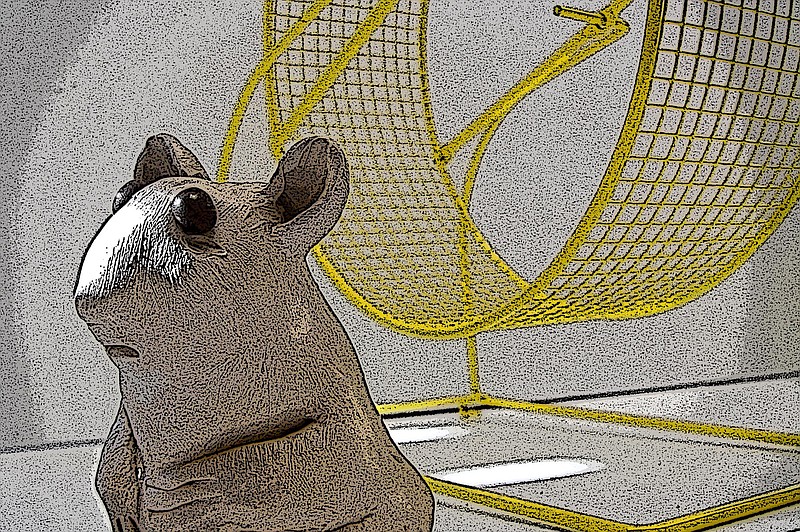Q: My hamster, Cheeky, doesn't use his exercise wheel. My friends' hamsters all do. Is Cheeky just lazy, or should I get him a different wheel?
A: Most hamsters enjoy their wheels, although some don't, just like some people don't relish jogging on a treadmill.
One study of wheel preference found that hamsters like large wheels, the 13.8 inch (35 centimeter) diameter size rats use, more than the standard 9.1 inch (23 centimeter) hamster wheel. They also prefer a running surface with closely spaced metal bars rather than bars covered with plastic mesh.
Another study investigated hamsters' foot wounds from standard metal bars versus bars covered with plastic mesh. Almost all hamsters developed tiny pinpricks, cuts or scabs on the undersides of their feet, but hamsters that used the mesh-covered wheels had larger and more persistent foot wounds than the hamsters that ran on wheels with metal bars.
Offer Cheeky a larger wheel that has metal bars rather than plastic mesh. If he still doesn't use his wheel, give him a variety of toys and spend more time playing with him.
Q: Fritz, our 6-year-old dachshund, was diagnosed with intervertebral disc disease after his back legs suddenly became weak and wobbly. His veterinarian prescribed crate rest, medications and a harness to support his back legs, but those measures have been only partially effective. Is there anything else we can try, short of back surgery?
A: Intervertebral discs sit between the spine's vertebrae, serving as protective cushions that facilitate movement of the back. In intervertebral disc disease, one or more discs degenerate and herniate, protruding into the spinal canal, where they press against the spinal cord.
The spinal cord carries nerve signals between the brain and the rest of the body, including the hind legs, so a herniated disc not only causes back pain and but also blocks the nerve signals, preventing the hind legs from working properly.
Risk factors include a genetic predisposition, body conformation (particularly the long back and short legs typical of dachshunds), overweight body condition and injury.
Intervertebral disc disease can be mild, moderate or severe. Mild disc disease is marked by back pain only. Moderate disease is characterized by back pain and diminished function, as you're seeing with Fritz. Severe disease is distinguished by paralysis of the hind legs and, often, loss of bladder and bowel control.
Mild disease is treated conservatively, with crate rest and medication for pain, inflammation and sometimes muscle spasms. Most dogs also benefit from acupuncture, usually electroacupuncture, and physical therapy, called physical rehabilitation in the canine world.
Severe disease requires immediate surgery, and even then, walking ability sometimes cannot be restored.
Moderate disease, the form Fritz seems to have, can be treated conservatively or surgically. Surgery removes the pressure of the defective disc on the spinal cord, but in one of four dachshunds, disc disease recurs in another disc within one to two years.
If Fritz is overweight, talk with your veterinarian about how to modify his diet to remedy that problem. Also, ask your vet about adding acupuncture and/or physical rehabilitation to Fritz's therapeutic plan.
Research has shown that dogs with disc disease that receive these adjunctive therapies along with medication do better than dogs treated with medication alone. And dogs clearly enjoy their acupuncture treatments and physical rehabilitation sessions.
Lee Pickett, VMD, practices companion animal medicine in North Carolina. Contact her at

